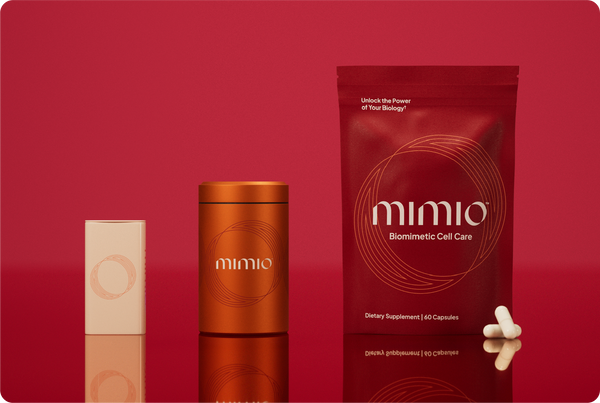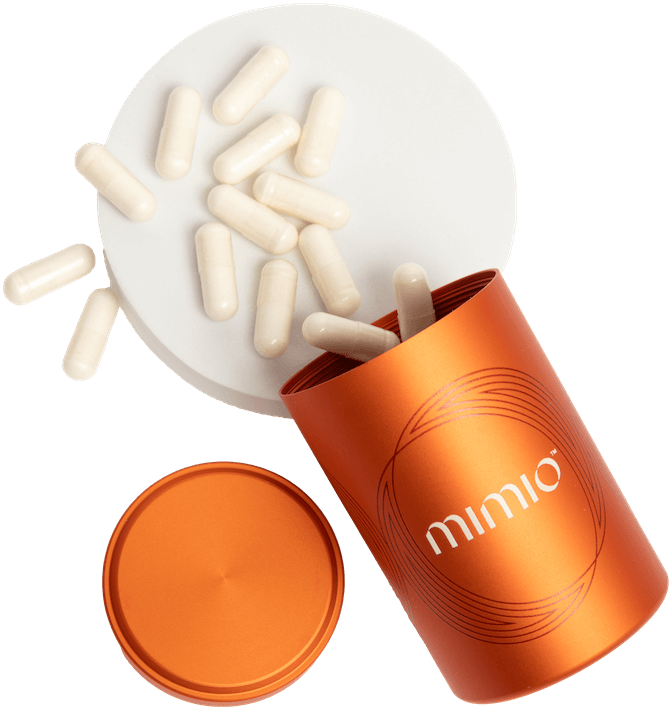The Ideal Fasting Duration for Enhanced Longevity
How Long to Fast for Longevity: A Science-Backed Guide to Aging Better
Longevity isn’t just about living longer—it’s about living better, for longer. Adding more life to your years, and not just years to your life. The science of fasting has surged to the forefront of longevity research, offering a compelling look at how time-restricted eating might hold the key to healthier aging. But with so many methods—intermittent fasting, 24-hour fasts, 36-hour fasts, and even extended multi-day fasts—it’s easy to wonder: how long should you fast for longevity?
Let’s dive into what the research says, how different fasting durations affect your biology, and how you can personalize your approach to harness the power of your own cells.
Why Fasting Works: Your Biology’s Built-In Repair Mode
Fasting isn’t a magic trick—it’s a biological switch.
When you fast, your body shifts away from digestion and enters a deep repair mode. This metabolic switch activates autophagy, a process where your cells recycle and remove damaged components, making room for healthy regeneration¹. Think of it like Marie Kondo for your cells—keep what sparks vitality, discard what doesn’t.
Fasting also:
-
Reduces chronic inflammation²
-
Increases insulin sensitivity³
-
Boosts production of human growth hormone (HGH)⁴
-
Supports brain function and mitochondrial health⁵
-
Mimics calorie restriction, one of the most extensively studied longevity interventions⁶
But here’s the real question: how long do you have to fast to access these benefits?
Understanding the Fasting Timeline: When Longevity Benefits Kick In
Not all fasting windows are created equal. Different durations unlock different layers of metabolic and cellular benefits. Let’s break it down:
0–12 Hours: Digestive Rest
You’re still in a fed state. Glucose from your last meal is fueling your body. Not much is happening on the longevity front—yet.
12–16 Hours: Insulin Drops, Fat Burning Begins
Insulin levels start to fall, prompting the body to tap into fat stores for energy. Early autophagy may begin⁷—especially if you fast regularly.
16–24 Hours: The Autophagy “On Switch”
Now, things get interesting. Your cells start to clean house, breaking down damaged proteins and organelles. Ketone production increases, stabilizing brain energy and mood⁸.
24–36 Hours: Peak Autophagy and Repair
Autophagy deepens, growth hormone spikes, and early immune system rejuvenation may kick in⁹. The body begins targeting senescent (zombie) cells—those linked to aging and chronic disease¹⁰.
36–72 Hours: Longevity Zone
This is the fasting sweet spot for longevity enthusiasts. Autophagy is in full gear. The immune system begins to regenerate, inflammation plummets, and metabolic pathways associated with lifespan extension (like AMPK and sirtuins) become more active¹¹.
Beyond 72 Hours: Proceed With Caution
Some researchers suggest deeper benefits continue after 72 hours, including stem cell activation and immune system reboot¹². But extended fasts should only be attempted under professional supervision to avoid nutrient deficiencies and metabolic stress.
So, How Long Should You Fast for Longevity?
If your goal is to optimize for longevity, here’s what the current science and fasting experts suggest:
Minimum Threshold: 16 Hours
Good for beginners and sustainable over time. Offers mild autophagy and metabolic perks. Think of it as the “maintenance mode” for long-term health.
Optimal Longevity Fast: 36 Hours
This is the fasting duration with the most compelling data around cellular regeneration, immune renewal, and autophagy. At 36 hours, your body has fully shifted gears from digesting food to optimizing itself for survival and renewal. It’s essentially mimicking what ancient humans experienced during periods of food scarcity—and your biology still responds in kind.
Frequency Matters Too
You don’t have to do a 36-hour fast every week. Many biohackers and longevity seekers do them once or twice a month, alternating with shorter fasts like 16:8 or 24-hour fasts a few times a week.
It’s not just about duration—it’s about consistency.
The Case for 36-Hour Fasting: Why It’s the Longevity Goldilocks Zone
Unlike shorter fasts, 36-hour fasts fully deplete glycogen stores and push your metabolism into fat-burning mode. This is when ketones become the primary fuel—offering neuroprotective and anti-inflammatory benefits.
Here’s what studies and clinical observations suggest happens during a 36-hour fast:
-
Improved insulin sensitivity
-
Peak autophagy and cellular cleanup
-
Reduction in zombie (senescent) cells
-
Increased growth hormone levels
-
Enhanced cognitive clarity and mood regulation
-
Immune system refresh
It’s like giving your body a spa weekend—except you skip brunch.
Not Everyone Can Fast—But There Are Options
Let’s face it: fasting isn’t easy for everyone. Whether it’s due to medical conditions, a demanding schedule, or just not vibing with the idea of skipping meals, not everyone can—or should—do a 36-hour fast.
Here’s where biomimetic science steps in.
Some supplements are designed to mimic the effects of fasting on a cellular level. Mimio Biomimetic Cell Care was clinically formulated to reproduce the benefits of a 36-hour fast—even during a meal. It works by activating the same longevity pathways that would naturally be triggered by fasting, giving your body a nudge to start its repair work without the hunger pangs.
This can be a game-changer for people who want the benefits of longer fasts but need a more flexible approach.
How to Get Started Safely
If you’re new to fasting, ease in. Here’s a quick roadmap:
-
Start with 16:8
Eat during an 8-hour window, fast for 16 hours. -
Level up to 24-hour fasts
Try skipping dinner once or twice a week. -
Build to 36-hour fasts once monthly
Make sure to stay hydrated and break your fast with a nutrient-rich, gentle meal. -
Use tools to support your fast
Herbal teas, electrolytes, mindfulness, and light exercise can help make fasting smoother.
And if full-day fasting isn’t for you? That’s okay too. Support your biology in other ways—nutrient-dense eating, stress management, movement, and biomimetic supplements.
Key Takeaways: How Long to Fast for Longevity
-
Short fasts (16–24 hrs) offer great metabolic and weight regulation benefits.
-
36-hour fasts are the sweet spot for longevity—maximizing autophagy, immune refresh, and cellular repair.
-
You don’t have to fast to benefit. Biomimetic solutions like Mimio Biomimetic Cell Care can help replicate fasting’s perks, even when you're eating.
-
Start small, be consistent, and listen to your body. Longevity is a marathon, not a sprint.
Aging is inevitable. But how you age? That’s more in your control. Whether you’re diving into fasting full-force or taking a more flexible approach, understanding the ideal fasting duration for longevity gives you the power to optimize your health—one cellular cleanup at a time.
References
-
Mizushima, N. & Komatsu, M. Autophagy: Renovation of Cells and Tissues. Cell (2011).
-
Longo, V.D. et al. Fasting: Molecular Mechanisms and Clinical Applications. Cell Metabolism (2014).
-
Sutton, E.F. et al. Early Time-Restricted Feeding Improves Insulin Sensitivity. Cell Metabolism (2018).
-
Ho, K.Y. et al. Fasting Enhances Growth Hormone Secretion. The Journal of Clinical Endocrinology & Metabolism (1988).
-
Mattson, M.P. et al. Intermittent Metabolic Switching and Neuroplasticity. Nature Reviews Neuroscience (2018).
-
Fontana, L. & Neel, B.A. Calorie Restriction and Aging. Aging Cell (2007).
-
Alirezaei, M. et al. Short-Term Fasting Induces Neuronal Autophagy. Autophagy (2010).
-
Cahill, G.F. Fuel Metabolism in Starvation. Annual Review of Nutrition (2006).
-
Brandhorst, S. et al. Fasting-Mimicking Diets Enhance Stem Cell Regeneration. Cell Stem Cell (2015).
-
Childs, B.G. et al. Senescent Cells and Aging. Nature Medicine (2015).
-
Madeo, F. et al. Caloric Restriction Mimetics: Towards a Molecular Definition. Nature Reviews Drug Discovery (2014).
-
Cheng, C.W. et al. Prolonged Fasting Reduces IGF-1/PKA and Promotes Hematopoietic Regeneration. Cell Stem Cell (2014).



